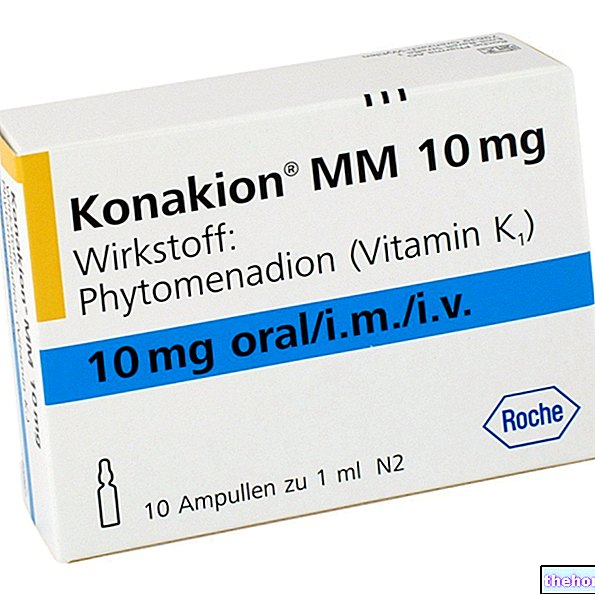
What is Zinforo?
Zinforo is a powder that is made up into a solution for infusion (drip into a vein). Contains the active ingredient ceftaroline fosamil.
What is Zinforo used for?
Zinforo is an antibiotic. It is used in adults to treat the following infections:
complicated infections of the skin and soft tissues (the tissues beneath the skin). An "infection is" complicated "when it is difficult to treat;
community-acquired pneumonia (an "infection of the lungs caught outside" the hospital).
The medicine must be prescribed taking into account the official indications on the correct use of antibiotics.
The medicine can only be obtained with a prescription.
How is Zinforo used?
Zinforo is administered at the recommended dose of 600 mg every 12 hours as an intravenous infusion lasting 60 minutes. In patients with complicated skin and soft tissue infections the treatment duration is five to 14 days, while in patients with community acquired pneumonia it is four to seven days. In people with moderate renal insufficiency, the doctor may need to reduce the dose to be administered.
How does Zinforo work?
The active substance in Zinforo, ceftaroline fosamil, is a type of antibiotic called 'cephalosporin', which belongs to the group of 'beta-lactams'. It works by interfering with the production of complex molecules, "peptidoglycans", which are fundamental components of the cell walls of bacteria. For this purpose, ceftaroline fosamil binds and blocks certain enzymes called transpeptidases, or penicillin-binding proteins, which participate in the last stages of the construction of the bacterial cell wall. In this way the cell wall of the bacterium weakens and tends to yield, with the consequent death of the bacterium.
In experimental studies, Zinforo has been shown to act against some bacteria against which other antibiotics belonging to the beta-lactam class have no effect, namely methicillin-resistant Staphylococcus aureus (MRSA) and penicillin-insensitive Streptococcus pneumoniae ( PNSP). The complete list of bacteria against which Zinforo acts is given in the summary of product characteristics (included in the EPAR).
How has Zinforo been studied?
The effects of Zinforo were first tested in experimental models before being studied in humans.
Zinforo has been studied in four main studies, where the medicine was compared with other antibiotics:
- in two studies involving a total of 1,396 adults, Zinforo was compared with the antibiotics vancomycin and aztreonam, used in combination to treat complicated skin and soft tissue infections;
- In two studies involving a total of 1 241 adults, Zinforo was compared with the antibiotic ceftriaxone for the treatment of community-acquired pneumonia.
In all studies, the main measure of effectiveness was the number of patients who recovered from infection at the end of treatment.
What benefit has Zinforo shown during the studies?
Zinforo has shown equivalent efficacy to that of other antibiotics in treating both types of infections:
- with regard to complicated skin and soft tissue infection, in the first study there was a cure in 86.6% (304 out of 351) of patients treated with Zinforo compared to 85.6% (297 out of 347) of patients treated with Zinforo. patients given the combination of vancomycin and aztreonam. In the second study, 85.1% (291 out of 342) of the patients who received Zinforo were healed compared with 85.5% (289 out of 338) of the patients who received Zinforo. patients who received the combination of vancomycin and aztreonam;
- with regard to community acquired pneumonia, in the first study healing was observed in 83.8% (244 out of 291) of patients treated with Zinforo compared to 77.7% (233 out of 300) of patients who had been administered the combination of vancomycin and aztreonam. In the second study, 81.3% (235 out of 289) of patients given Zinforo were cured compared with 75.5% (206 out of 273) of patients treated with ceftriaxone.
What is the risk associated with Zinforo?
The most common side effects of Zinforo (seen in more than 3% of patients) are diarrhea, headache, nausea and itching; these side effects were generally mild or moderate in severity.
Zinforo must not be used in people who are hypersensitive (allergic) to ceftaroline fosamil or any of the other ingredients. Furthermore, Zinforo must not be used in patients who are hypersensitive to other antibiotics belonging to the cephalosporin class and in those severely allergic to other beta-lactam antibiotics. For the full list of restrictions, see the package leaflet.
Why has Zinforo been approved?
The CHMP noted that Zinforo was effective in the treatment of complicated skin and soft tissue infections and community acquired pneumonia and that it was generally well tolerated. Due to the relatively short duration of treatment the risk of hypersensitivity is considered limited. The CHMP noted that, in experimental models, Zinforo has been shown to be active against certain bacteria, including MRSA, against which other antibiotics belonging to the beta-lactam class have no effect. However, uncertainties remain about the effects of Zinforo in people with some serious infections. These effects will be investigated in further studies. The CHMP decided that the benefits of Zinforo are greater than its risks and recommended that it be given a Marketing Authorization for medicinal.
More information about Zinforo
On 24 August 2012, the European Commission issued a "marketing authorization" for Zinforo, valid throughout the European Union.
For the complete version of Zinforo's EPAR, consult the Agency's website: ema.Europa.eu/Find medicine / Human medicines / European public assessment reports. For more information about Zinforo therapy, read the package leaflet (included with the EPAR) or contact your doctor or pharmacist.
Last update of this summary: 08/2012.
The information on Zinforo published on this page may be out of date or incomplete. For a correct use of this information, see the Disclaimer and useful information page.




























